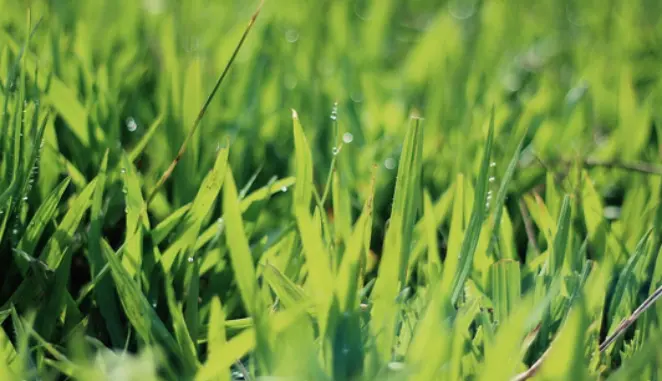Lawn Thatch
What is Lawn Thatch?
Lawn thatch is a natural part of turf and is not necessarily a problem.
Thatch is the layer of yellow blades at the base of grasses, and gives your lawn a bit of bounce making it feel a bit spongy when you stand on it. It is basically the base of old grass stems which start to die and decay when grass grows new shoots.
Is Lawn Thatch a Problem?
A layer of thatch around one centimetre thick is actually beneficial to your lawn.
It helps to make you lawn dense and protects the soil layer, whilst still allowing the rain water to reach the soil.
Once the rainwater reaches the soil it also acts as a mulch layer preventing the water from evaporating from the surface.

It is only when thatch builds up a thicker layer that it can become a problem, around 2-3cm. Like a thatch roof keeps a home dry, too much thatch in your turf can create an impermeable layer and prevent water from reaching the soil beneath.
This will then cause your lawn to suffer and struggle. A build up of thatch can also feed lawn diseases providing them with decaying matter to feed on, causing further problems for your lawn.
Controlling Thatch
Step 1: Choose the right grasses
Some grasses produce more thatch than others. Rye grasses are hard wearing varieties of grass and do not produce thatch. If you are re-doing your lawn and don’t want to be spending loads of time looking after it, choose a standard family garden turf as opposed to a more ornamental/luxury one, as these tend to contain a high proportion of rye grass so are hard wearing and will produce less thatch.
Step 2: Scarify
If thatch does start to build up over two centimetres thick then it is a good idea to scarify your lawn in the autumn or spring. Using a strong rake or ideally a proper lawn scarifier remove the excess thatch so that the water can reach the soil again.
Step 3: Aerate
Aerating your lawn encourages grass to grow strong, deep roots and helps to reduce the build up of thatch. Use a hollow tine aerator to remove plugs from your lawn. See our blog on aerating for more information.
Step 4: Feed, Seed and Water
Ensuring your lawn is well fed and watered will keep it nice and healthy and encourage deep root growth. This will help to reduce the accumulation of thatch. If removing thatch has left some areas bare, overseed the areas to build up a healthy lawn.
When dealing with thatch, always remember that some thatch is healthy for your turf. The best approach is to keep your lawn well maintained, fed and watered and that way thatch should not become a problem.


